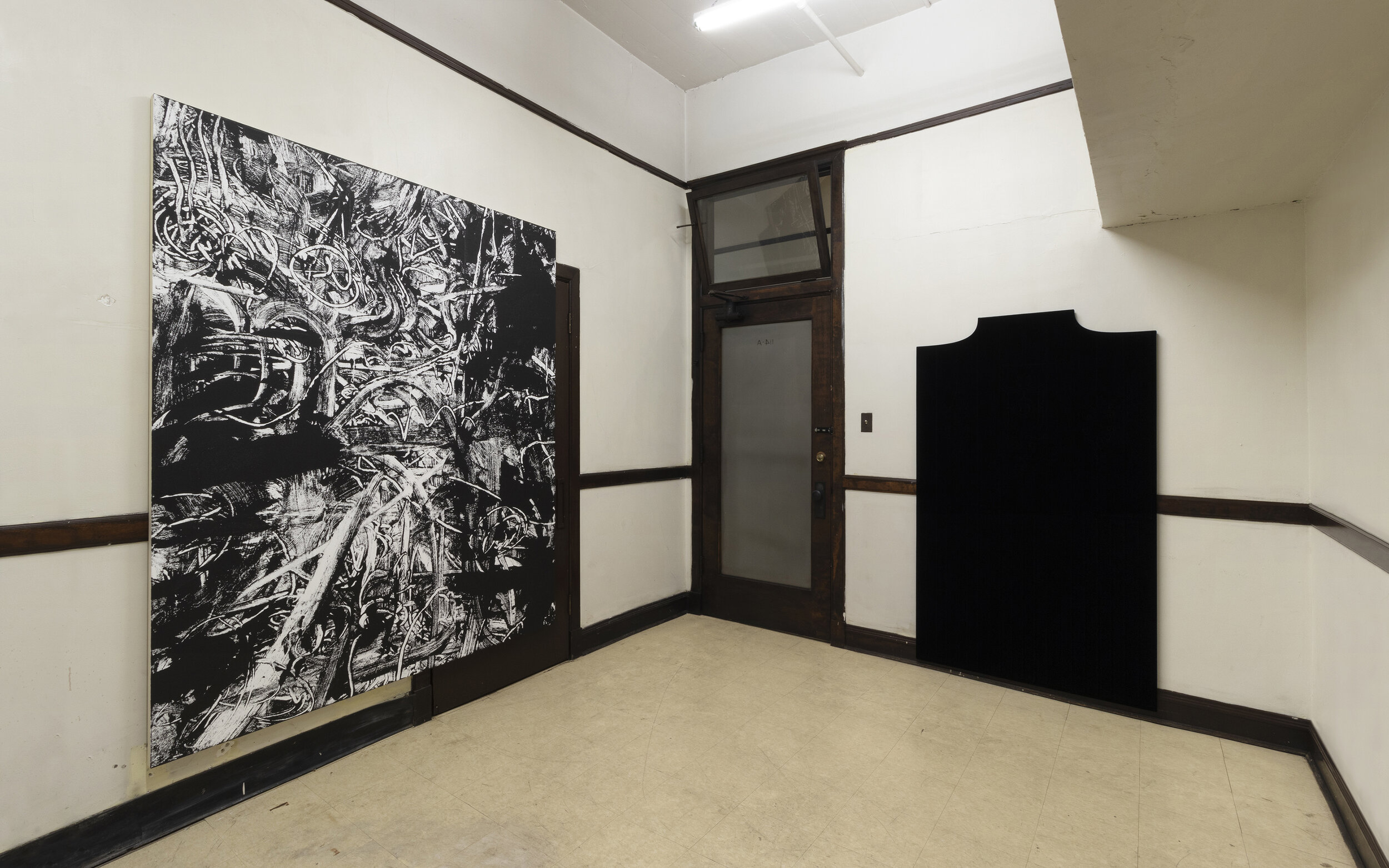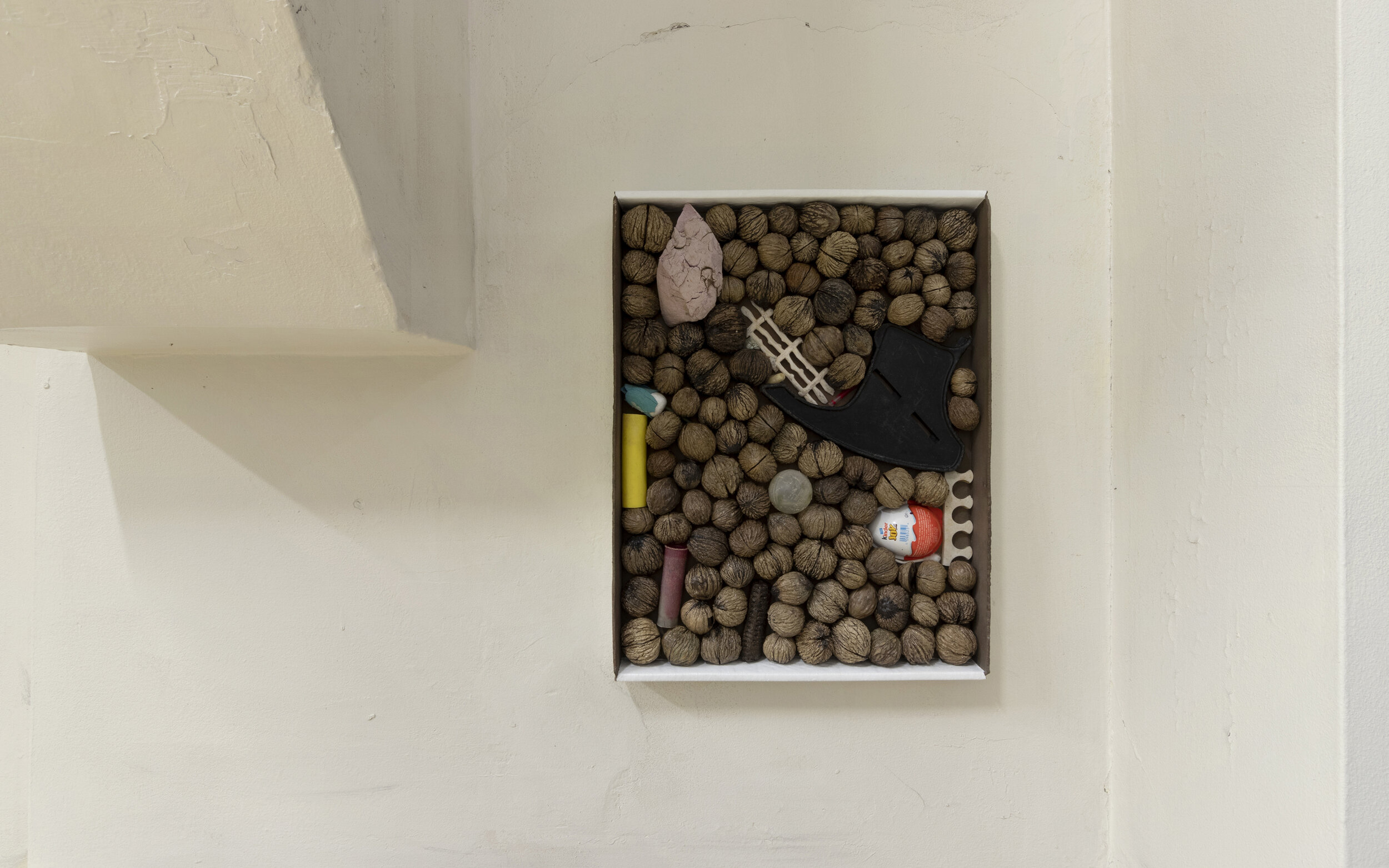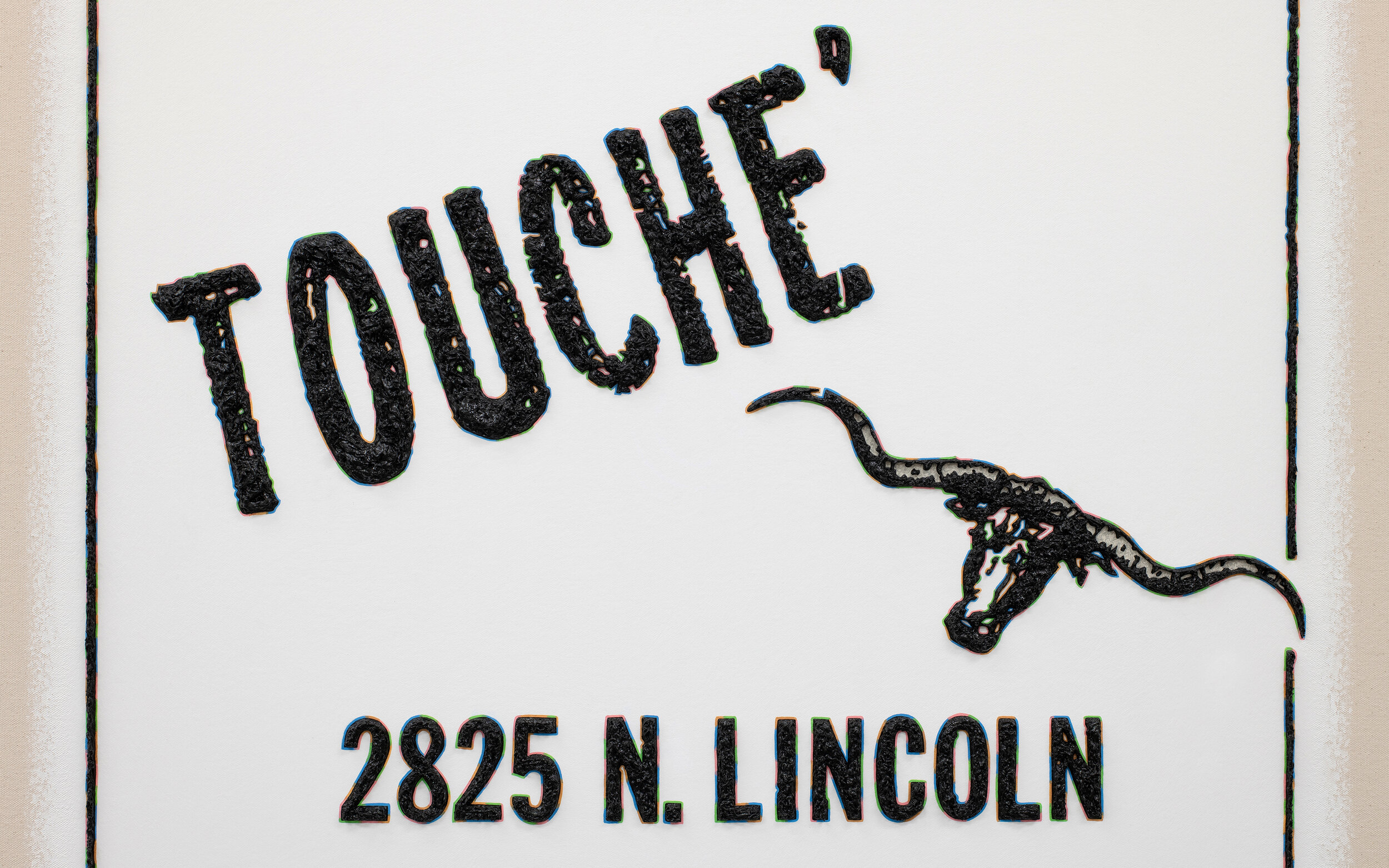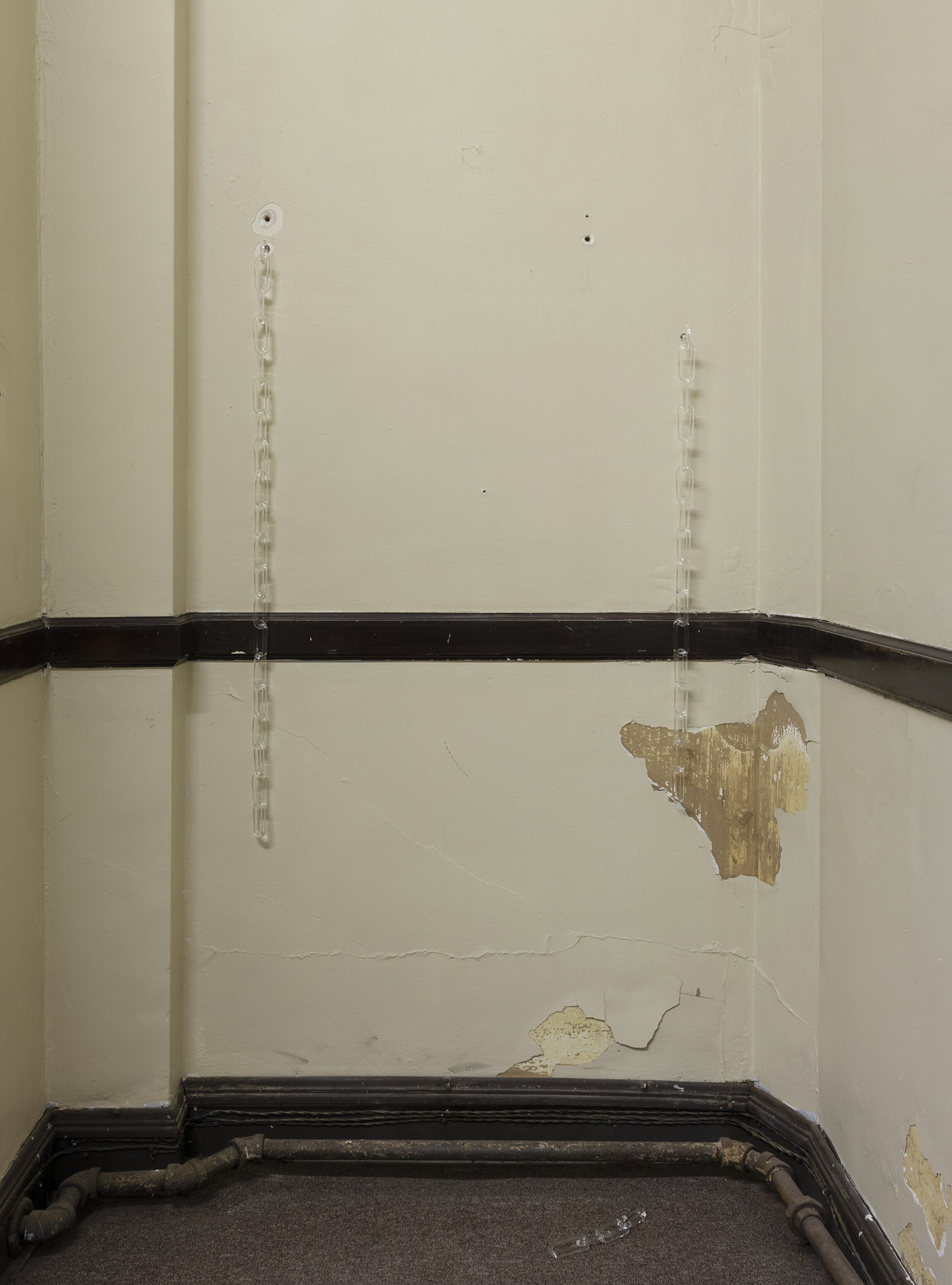Desolation Row
Inga Danysz, Ron Ewert, Amy Garofano, Matt Siegle
September 15 – November 10, 2019
@
Good Weather
By JL Murtaugh
Leading into the annual fair week in Chicago, Haynes Riley and the North Little Rock-headquartered itinerant gallery Good Weather opened Desolation Row, a group exhibition of artists Inga Danysz, Ron Ewert, Amy Garofano, and Matt Siegle. The gallery, in its eighth year and well-known for staging projects in uncommon venues, chose two offices in an outlying commercial warehouse on Chicago's Southwest side. Both rooms still possess a clear line-of-sight to the distant mountain range of the Loop downtown, despite the other surrounding light-industrial buildings and parking lots.
The show, principally comprised of wall-based work, elaborating from its isolated urban setting and empathetic title, is thoughtfully choreographed into two parts. Ewert's oversized gesso paintings and Garofano's velvet architectural compositions provide the exhibition's spatial anchor, defying the inscribed office scale by overlapping the windows, doors, and trim. Scanning the show, Garofano's work can briefly blend into the interior structure before catching the angle to rediscover their extremely subtle detail of residential gates. The gallery's release repeatedly refers to these works as paintings, but they are not nor even claim to be. Rather, the flocked-felt panels present themselves as hazy, dark, low-relief sculptural recollections of normative domestic fascism. Wrought-iron fences like these works evoke incarnate prosperity narratives, presenting misremembered timelines endeavoring to bridge antiquity and European nobility to the prototypical latter-day landed subdivision class of Smiths and Richardsons.
In opposition to these frozen ornamental barriers, Ewert's canvases here are emphatically gestural and emote the aura of a pathological newspaper press resigned to its obsolescence. 'Skeleton Armpit' and 'All That There' are progressions of a black and white mono-printing process, related to his solo installation with Good Weather at Liste in Basel last summer. Like those walls of carved wooden blocks, the prints in Chicago overwhelm the rooms in a far different manner to Garofano's gates. Ewert's uncertain subject is less solemn, though more calculated and severe.
Matt Siegle's TOUCHE, also part of the first room, is an impasto rendition of an advertisement for a long-faded venue. Of all the show's work, it feels the most at home in the space, intimating a degraded sketch for an abandoned marketing pitch, forgotten many moves ago and consigned to the rear of the supply cabinet. Siegle's other wall sculptures depict bronze trays – vertical junk drawers – which like Garofano's are a kind of twentieth-century suburban archaeology. Small plastic bits of mass-produced ephemera wedge between masses of petrified walnut shells.
Where Garofano establishes the exhibition's tone, Frankfurt-am-Main-based Inga Danysz melds it into a cohesive proposition with her transparent glass chain fragments, and chiefly with Crawler, a looped audio recording of metal dragged across metal. Conceivably, the sounds and chains may represent the ratcheting specter of the warehouse's industrial hoist, left to fallow decades prior.
Desolation Row submits a lamentation in the biblical sense – a remembrance of pain. It avoids hagiographic working-class nostalgia while seeking a reflective, melancholic memory of a profoundly flawed history. Beyond that, it's unavoidable to interpret this exhibition in the context of the gallery's larger work, and its responsive position toward the high-stress, low-income, often unrecognized endeavor of operating an artistically rigorous, commercially oriented gallery on the fringes of the international market.
Haynes Riley, while introducing the show, addressed the gallery's constant touring programme throughout North America and Europe since 2017, when its original space in Arkansas became the permanent home of a Mariel Capanna fresco. Even from their temporary Chicago site, the gallery remains nomadic. This exhibition supplemented their participation in two concurrent fairs – the NADA Chicago Invitational and the experimental, miniature Barely Fair – followed soon by an exhibition at the Green Gallery in nearby Milwaukee later in autumn.
While Riley is the artistic director for Good Weather, it's a collective enterprise with sales managed by his sister Erin, logistics and events by twin brother Hunter, with a network of family and friends invested in the gallery's activities to varying degrees. The focused conceptual aim of Good Weather goes some way to disprove the conceit that location is the determining factor in quality, or defines its programme. At its best, what a gallery is – what it has always been – is a union of principles; establishing agency for creative minds stronger cooperatively than as individuals.




